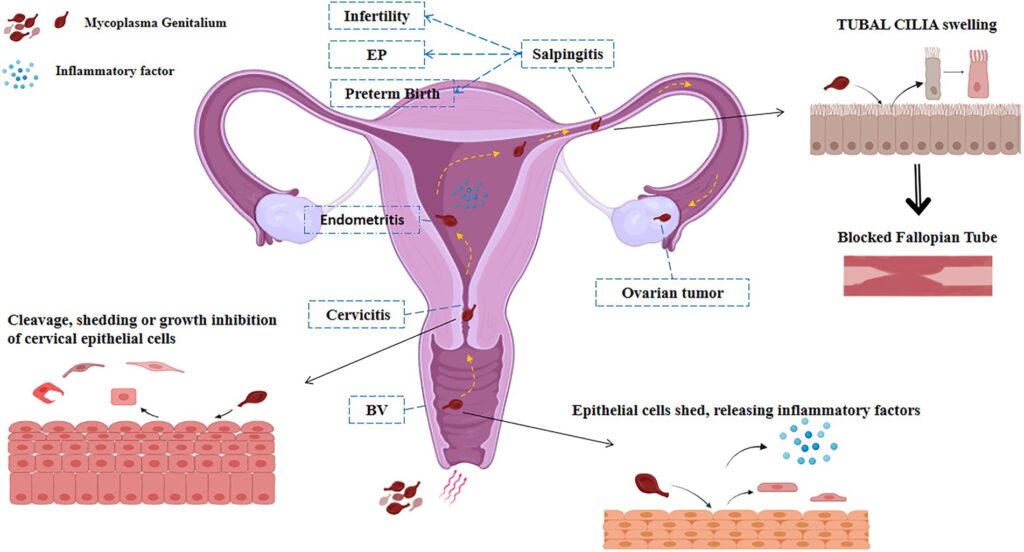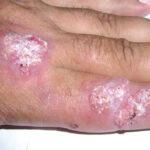Mycoplasma hominis is a facultative anaerobic bacterium commonly found in the urogenital tract. While often asymptomatic, it can contribute to pelvic inflammatory disease (PID), a serious infection affecting the female reproductive organs. PID can lead to chronic pelvic pain, infertility, and ectopic pregnancy if left untreated. Understanding the role of Mycoplasma hominis in PID is crucial for early diagnosis and effective treatment.

How Mycoplasma hominis Causes Pelvic Inflammatory Disease
Mycoplasma hominis is part of the normal vaginal microbiota but can become pathogenic under certain conditions, such as bacterial vaginosis or immunosuppression. It ascends from the lower genital tract into the upper reproductive organs, causing inflammation and infection.
Risk Factors for Mycoplasma hominis-Associated PID
- Multiple sexual partners
- Unprotected intercourse
- Previous episodes of PID
- Use of intrauterine devices (IUDs)
- Douching, which disrupts vaginal flora
- Immunosuppressive conditions (HIV, chemotherapy)
Symptoms of Mycoplasma hominis Pelvic Inflammatory Disease
Symptoms may vary in intensity and can include:
- Pelvic pain – Ranges from mild discomfort to severe cramps
- Abnormal vaginal discharge – Often with a foul odor
- Pain during intercourse (dyspareunia)
- Irregular menstrual bleeding
- Fever and chills – Indicating systemic infection
- Painful urination – Due to co-existing urethritis
Complications of Untreated PID
Without prompt treatment, Mycoplasma hominis-associated PID can result in:
- Infertility – Due to scarring of the fallopian tubes
- Ectopic pregnancy – Increased risk of fertilized egg implanting outside the uterus
- Chronic pelvic pain – Persistent inflammation leading to long-term discomfort
- Tubo-ovarian abscess – A severe infection requiring hospitalization
Diagnosis of Mycoplasma hominis Pelvic Inflammatory Disease
1. Laboratory Tests
- Endocervical swab – PCR testing for Mycoplasma hominis DNA
- Urine culture – Identifies bacterial presence
- Vaginal pH test – Detects bacterial vaginosis, which predisposes to PID
2. Imaging and Physical Examination
- Pelvic ultrasound – Identifies inflammation and abscess formation
- Bimanual examination – Assesses cervical motion tenderness, a key PID indicator
Treatment Options for Mycoplasma hominis Pelvic Inflammatory Disease
1. Antibiotic Therapy
- First-line treatment includes a combination of doxycycline and metronidazole to target Mycoplasma hominis and co-infecting bacteria.
- Severe cases may require intravenous antibiotics, such as clindamycin and gentamicin.
2. Pain Management
- Nonsteroidal anti-inflammatory drugs (NSAIDs) for pelvic pain relief.
3. Surgical Intervention
- Laparoscopic drainage for tubo-ovarian abscesses if antibiotics fail.
Prevention Strategies
- Practice safe sex – Use condoms to reduce transmission risk.
- Avoid douching, which disrupts normal vaginal flora.
- Get regular screenings for sexually transmitted infections (STIs).
- Ensure proper hygiene and post-surgical care after gynecological procedures.
Early detection and treatment of Mycoplasma hominis-associated PID are essential to prevent severe reproductive health complications. Safe sexual practices and routine screenings remain key preventive measures.

